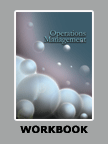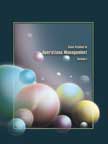Waiting Line Management at Tirumala, Large Pilgrimage Centre in India
|
|
ICMR HOME | Case Studies Collection
Case Details:
Case Code : OPER104
Case Length : 13 Pages
Period : 2002-2012
Organization : Tirumala Tirupathi
Pub Date : 2012
Teaching Note :Available
Countries : India
Industry : Power
To download Waiting Line Management at Tirumala, Large Pilgrimage Centre in India case study
(Case Code: OPER104) click on the button below , and select the case from the list of available cases:

Price:
For delivery in electronic format: Rs. 400;
For delivery through courier (within India): Rs. 400 +Shipping & Handling Charges extra
OR

Buy Now
|
» Operations Case Studies
» Operations Short Case Studies
» View Detailed Pricing Info
» How To Order This Case
» Business Case Studies
» Case Studies by Area
» Case Studies by Industry
» Case Studies by Company
Please note:
This case study was compiled from published sources, and is intended to be used as a basis for class discussion. It is not intended to illustrate either effective or ineffective handling of a management situation. Nor is it a primary information source.
Chat with us

Please leave your feedback

|
|




<< Previous
|
Tirumala, one of the largest and busiest pilgrimage centers in the world, had witnessed a continuous increase in the number of visitors it received. The average number had gone up from 20,000 per day in 1990s to 65,000 per day in 2012. The Tirumala Tirupati Devasthanam (TTD), which administered the Tirumala temple along with providing a few supporting services to the pilgrims, experienced great difficulty in managing the darshan1 queue2. With the objective of reducing the waiting line, TTD approached academic consultants and had been devising different strategies of reducing waiting line from the 1990s. Though there was lot of improvement, the mayhem still continued.
|

|
About Turumala
Tirumala, one of the largest and busiest pilgrimage centers in the world, is a hill station located in an extension of the Western Ghats in India. Traditionally, it was called Venkatadhri, the residing place of Lord Vishnu3 /Lord Venkateswara. According to experts, it was one of the oldest religious institutions in the world, with a history of around 2000 years.
The temple was built by Pallava king Thondaiman. Many South Indian kings donated huge sums to develop and maintain the temple and the town. During times of invasion, they safeguarded the temple. Based on the recorded history, the rituals and daily routines in this holy temple had been performed without a break for more than 1000 years.4
Over a period of time, Tirumala evolved into an epicenter of Vaishnavism5 . For instance, many prominent Hindu religious institutions either had a presence in Tirumala or had made the place their headquarters. Tirumala attracted a large number of visitors from all over the country irrespective of their religion, caste, nativity, social status, or professional affiliation. Over a period of time, the number of visitors to the temple and the town had increased tenfold.
To administer and control the Tirumala temple and the surrounding temples in the Tirumala area, the Tirumala Tirupati Devasthanam (TTD)6 committee was set up by the then government in 1933. In 1951, the TTD administration was entrusted to a Board of Trustees. The members and an Executive Officer were appointed by the government. As of 2012, TTD controlled 12 temples and their sub-shrines, and had about 14,000 employees.7 TTD provided facilities and services to make the experience a unique and rewarding spiritual one for the prilgrims to Tirumala.
TTD was majorly involved in: Planning, monitoring, and executing (transfer) a road transportation network from Tirupati to Tirumala and vice versa; Managing pilgrims and providing accommodation to them; Managing tonsure8 facilities; Providing free meals to up to 25,000 people every day; Managing the waiting line or queue of pilgrims and ensuring that they have an orderly darshan; Managing the distribution of more than 150,000 laddus9 every day.
Apart from these, TTD had been involved in many other activities like providing sanitary and other facilities to pilgrims, arranging tour packages for pilgrims to visit nearby tmples in and around Tirumala, etc. As of 2012, TTD had evolved as a social institution providing financial support to other educational institutions and temples.
Pilgrimage to Tirumala
- Next Page>>
|
|









